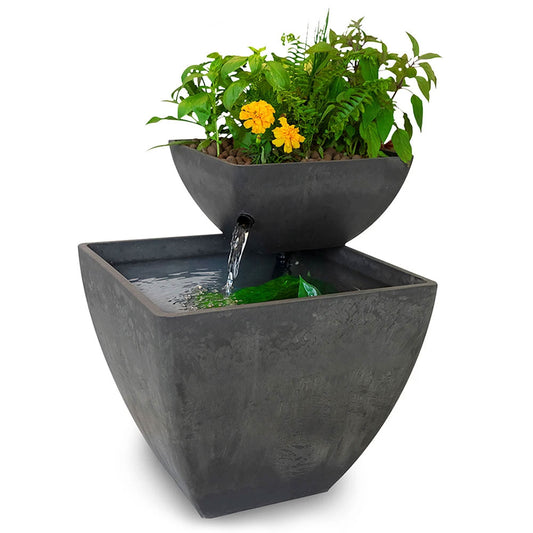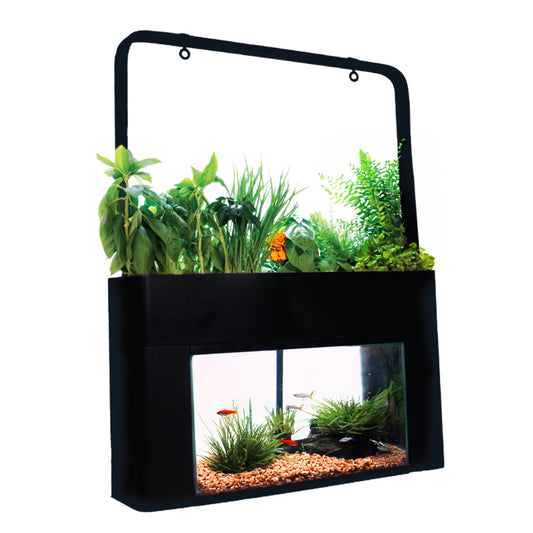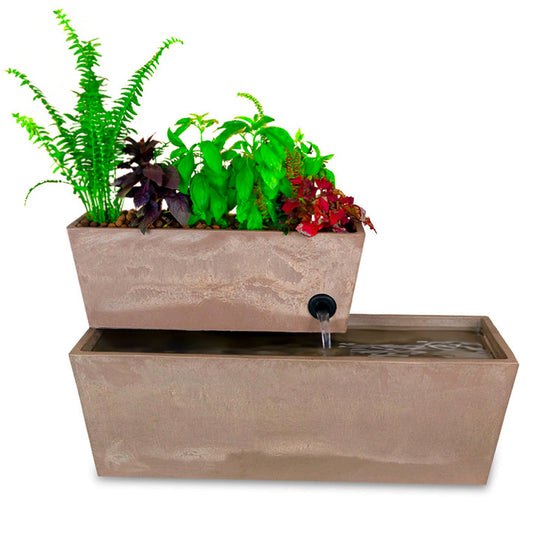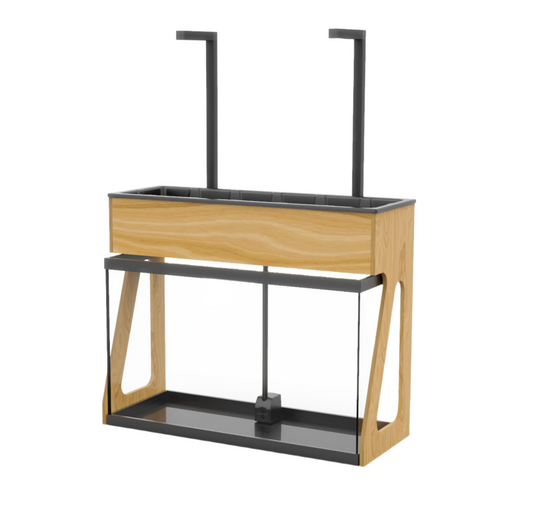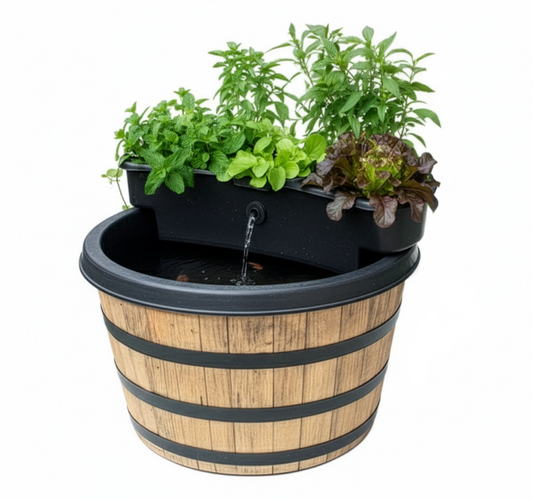Sprouting and Starting Plants in Your Aquaponic Garden
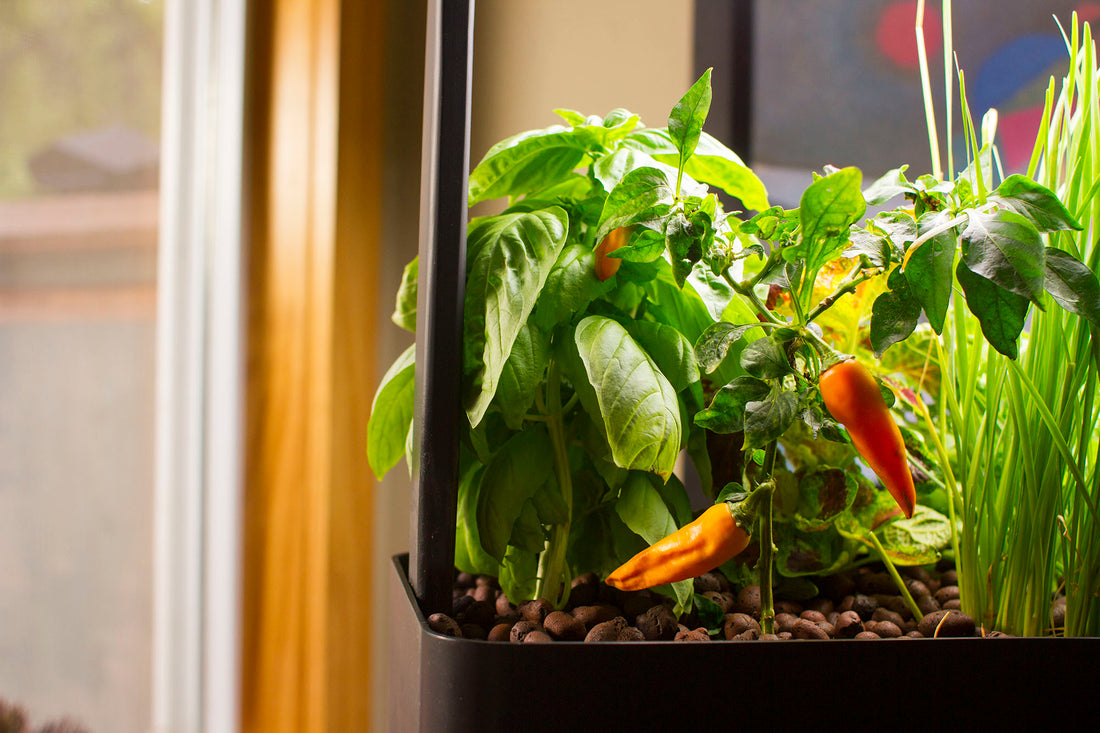
Planting your AquaSprouts Garden is easy! In most ways, you can treat it just as you would a standard garden bed. We've put together a summary of the major variations on planting, along with some pros and cons for you to consider:
Direct Sowing
Some seeds can be sown in your Garden just like you would in soil! Spread the seeds out evenly, or for larger seeds, push them down under the top dry layer of media; then wait for them to germinate naturally! Some seeds will germinate better than others under these conditions, so you'll need to sow densely with the expectation that they won't all come up. This is a good option for many greens like lettuce and chard. Sowing seeds directly also has the advantage of not damaging the microscopic hairs on plant roots; these root hairs are the site of much of the plant's nutrient uptake, and damage to them during transplanting can slow down the growth of a new plant significantly. Sprouting seeds in place means you won't need to transplant them at all!
Since you'll need to sow densely, seeds that are broadcast will often need to be thinned after they sprout, pulling out extras to reduce crowding. With salad greens, this can actually be a plus - you can gradually thin out the plants as they grow, pulling or clipping the extras to make a salad of tasty microgreens! Be careful to cull extra plants early and leave plenty of space, though; overcrowded plants will be undernourished, and malnutrition early on can leave a plant weedy and sickly for the rest of its life.
Starter Plugs
Starting seeds in a separate media plug and then placing the plugs into the Garden is a great way to get your Garden bed arranged just the way you want it. Once the seeds germinate and grow to your desired size, they can be transferred into the bed by pushing aside pebbles to make a small hole and gently placing the seedling in it, roots downward. Carefully cover the plug with media, then, if necessary, use stakes or ties to support the plant until its roots grow out of the plug to hold it up.
There are a wide variety of starter plugs available. The most common type is compressed peat or a similar organic material; the plug material will eventually break down, which is a bonus in soil but can create debris and cause clogs in an aquaponic system. If you're using these, choose the smallest size you can find. Rockwool and other fibrous materials that are inorganic or durable (some gardeners use cotton wool or hemp fibers, for example) will wick moisture to sprouting seeds without breaking down as quickly as peat plugs. And finally, yes, you can place seeds between two damp paper towels! (It's best to select an unbleached variety, and you'll have to figure out how to very gently get the seedlings upright if they sprouted on their sides; but in a pinch, they will do the trick.)
Cuttings and Cloning
Some plants can be introduced by sticking cuttings directly into the grow-bed (sometimes referred to as “cloning”). Fast-growing herbs like basil and mint will readily sprout roots from cuttings, making them a great way to kick-start a garden without having to wait for seedlings to grow. You can also obtain rooting compounds - extracted or synthesized hormones that induce many plants to grow new roots - at most places where gardening supplies are sold. By dipping the cut ends into rooting compounds, an even wider variety of plants can be induced to grow this way. More delicate plants may need to be rooted out in water or a starter medium before being placed in the grow bed.
Taking cuttings is a fine art with a long history and a great deal of specialized knowledge about what works best for different plants. If you have a prized plant that you'd like to replicate, a little research on cloning that particular species and cultivar can be a big help!
Transplanting Starts
Finally, you can obtain plant starts from a store or your garden, or start seeds in soil yourself. This is a great option if you have a sunny outdoor space for your starts. Once they sprout, good soil and strong light will help them grow thick and robust; starts grown indoors under inadequate lighting are often leggy, weak, and prone to stem breakage.
When transplanting from soil, fill a small container with water and gently rinse the dirt off of the roots before placing the plant in the grow medium deep enough that the roots touch the water. Applying rooting compound can be helpful here, too, since the transplanting process can damage the plant's roots and the compound will encourage rapid regrowth. As with using starter plugs, you may need to use stakes or ties to stabilize the new transplants until they grow out enough to support themselves.
Tips
No matter what method you're using for starting, keep in mind that plants need plenty of space to grow. A good general rule is that if two plants' leaves are close to touching, their roots are already competing for resources, so cull or cut back before your plants grow together to leave them plenty of space!
If you're not sure how big a plant will get, check your seed packet or the tag on the start; they'll have information about the size of the full-grown plant and the spacing they typically need. Aquaponic plants will be growing in a nutrient- and oxygen-rich environment, so they may need as little as half as much space as soil-grown crops, but they can still be overcrowded.
Always be as gentle as you can when planting. Roots are very sensitive, so even if you’re careful, it might take a while for a new plant to settle in to its new environment. Be patient, and before long your transplanted plants will perk up and thrive in their new home.

